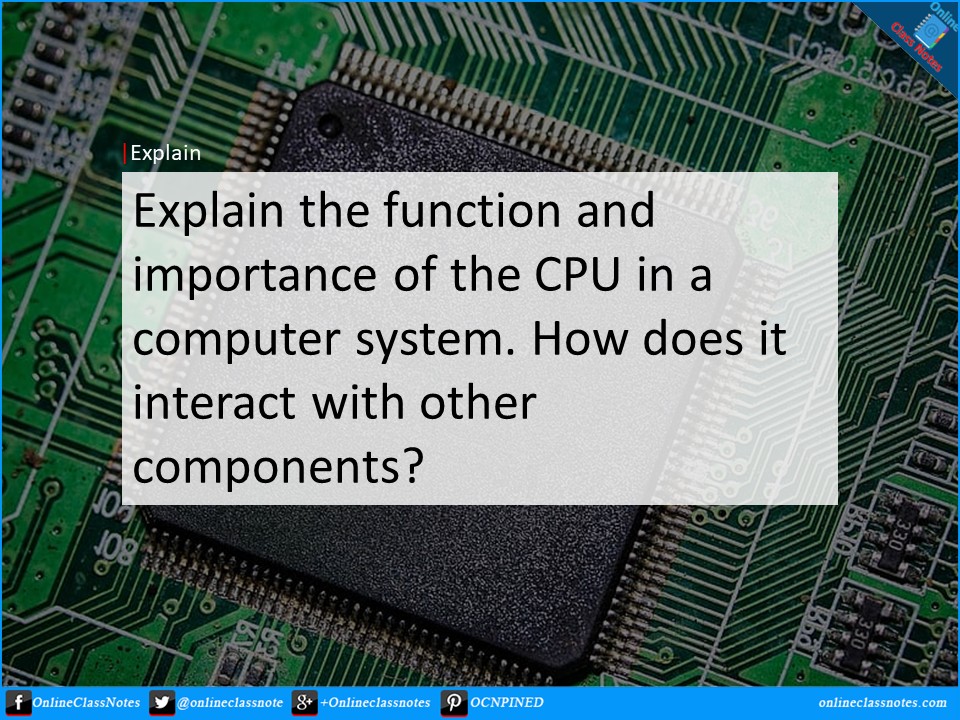The CPU (Central Processing Unit) acts as the computer’s brain, managing instruction execution and conducting essential calculations for system functionality. It coordinates data processing, executes programs, and interacts with other components to ensure seamless operation.
Functions of CPU
- Instruction Execution: The CPU executes instructions stored in memory, ranging from basic arithmetic and logic operations to more complex tasks like fetching data from storage, manipulating it, and storing the results back in memory.
- Data Processing: It processes data by performing arithmetic operations (addition, subtraction, multiplication, division) and logical operations (AND, OR, NOT) as directed by the instructions.
- Control: The CPU controls the flow of data within the system by directing the movement of instructions and data between different components. It coordinates the activities of various hardware components to ensure smooth operation.
- Resource Management: It manages system resources such as memory, input/output devices, and peripheral components. This includes allocating resources as needed, scheduling tasks for execution, and handling interrupts.
- Decision Making: The CPU makes decisions based on the instructions it executes and the data it processes. These decisions can range from simple branching (e.g., if-else conditions) to more complex operations involving loops and function calls.
Read More: What is CPU? What are the 10 functions of CPU?
Importance of CPU
The importance of the CPU lies in its central role in enabling the functionality of a computer system. Without a CPU, a computer would be unable to execute programs, process data, or interact with users effectively. It interacts with other components of the system through various buses and interfaces.
- Memory: The CPU interacts with main memory (RAM) to fetch instructions and data for execution. It reads instructions from memory, processes them, and stores the results back in memory.
- Input/Output (I/O) Devices: The CPU communicates with input/output devices such as keyboards, mice, displays, and storage devices to send and receive data. It manages data transfer between these devices and memory.
- System Bus: The CPU communicates with other components of the system, including memory and I/O devices, through the system bus. The bus serves as a pathway for data and control signals to flow between the CPU and other components.
- Peripheral Controllers: The CPU interacts with peripheral controllers, which manage communication between the CPU and specific types of devices (e.g., disk controllers, network interface controllers).
The CPU’s function and interaction with other components are essential for the operation of a computer system, enabling it to execute programs, process data, and perform various tasks efficiently.
